Updated: 18-Sep-2023
Microturbo begins its activity in 1960 in Toulouse. After passing through Labinal, and today it is part of the SAFRAN group (see).
-They are specialized in small turbines that were initially used in starting systems and in auxiliary groups on board (APP) and ground (APU).
-There is an extensive range of Microturbo products, some of them very little known like the "Athos III".
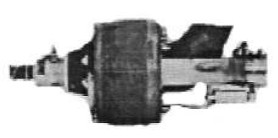
“Athos III”
-Others such as the "Eclair" with better fortune, was derived from the starters on the Olympus Concorde and the Snecma "Atar".

“Eclair”
-The Eclair, in a turbojet version, gave around 80 kgf at 47,500 rpm and has been used on motorgliders such as the Calif A-21, Prometeus I, or mounted on Charles Fauvel's AV-45 flying wing, demonstrating more qualities than the piston engine that powered it previously.
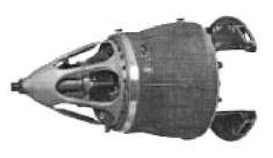
“Noelle 60 CV”
-The Eclair was derived from the Noelle. Precisely the strong development of Microturbo was noted with the "Noelle" starter group series 60290 and its subsequent evolutions that equipped the "Atar" engines.

“Noelle 60290-002-015”
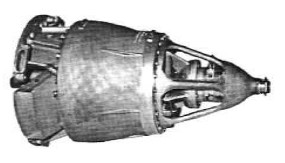
“Noelle 80 CV”
-The Noelles are starters -having the shape of the entrance dome- that give from 60, 80 to 180 HP depending on the model and application. For example, the 60 CV is installed on the Etendard IV (Atar 8C).
-The 80 CV Noelle are also mounted on the Mirage II, IV and V with Atar 9C and 9K turbojets.

“Noelle 150”
-The -015 version goes on the Mirage F1 with the Atar 9K50 and on the SuperEtendard with the Atar 8K50.
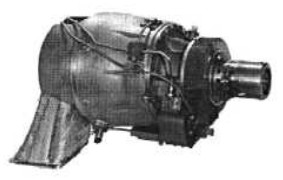
“Noelle 180”
-The "Noelle" 150 and 180 have been the starter and auxiliary groups for the Snecma M35C Engine on the Mirage 2000 and 4000. In the above photos we see a kind of mast that is actually a hollow exhaust duct that conducts gases from the turbine to the outside of the aircraft.
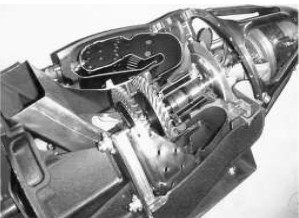
“Noelle cutaway”
-We show the Noelle starter cutaway that can be admired at the Safran Museum in Villaroche.
-Start turbines, as autonomous turbines, are either installed directly on the engine in the same front cone of the main engine, driving the rotor shaft or they are completely separate.
-In that case, they need starters that use their compressed air to launch and accelerate the airplane's main-engine shaft.

"Three compressed air starters"
-The "Couguar" is the turbojet version for target aircraft (drones) with 60 Kgf of thrust.
-It is a single-body, single-flow turbojet, used for flying devices such as the Australian Turana target plane.
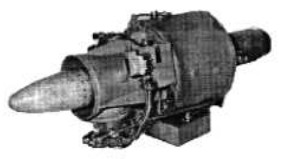
“Couguar 022”
-The -022 version gave 78 daN at 9,000 meters of altitude.
-The main auxiliary energy groups (electricity and air) have been the "Saphir", "Gevaudan", "Dragon" and "Jaguar".
-There were the "Rubis" and "TGA" turbo generators as well.

“Jaguar 007”
-The "Jaguars" have their application on the Sepecat Jaguars, on the Hawk and McDonnell T-45. They give 50 CV.
-The "Saphirs" are auxiliary groups of modular design, they supply pressurized air and electrical energy, they can mount a generator and alternator in cascade.
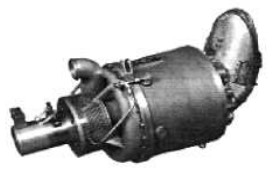
“Jaguar”
-The “Saphir” 4-2 goes on the Mystére 20 business jet and gives 9 kW.

“Saphir 4-2”
-The "Saphir" 3 was installed on the Westwind (IAI) and gave 9 kW as well. The 6 on the Falcon, Mystere 20, with the 9 kW generator plus a 12 KVA alternator.

“Saphir 3”
-The 7 was mounted on VIP helicopters like the one of Westland. The 12 KVA “Saphir” 10 went on the Hawk 200.
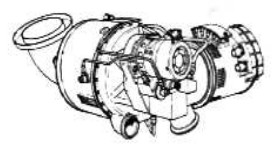
“Saphir 10”
-The "Saphir" 20 went on the Super Puma.

“Saphir 20”
-A version based on the 4-2 is also used within the module or for APU ground equipment.

“In a module"

“In a ground APU”
-The "Saphir" 100 is made in four versions from the basic one, the -1. They are built under ICAO standards, certified by the FAA and JAA (EASA).
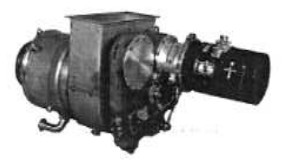
“Saphir 100”
-Its multiformity makes it very adaptable to many applications.

“Rubís 1”
-The "Rubis" 1 is an auxiliary power group, with engine starting capacity between -150 meters. and 6000 meters high. It is mounted on the Dassault Falcon 20 and Falcon 2000N versions. It gives compressed air and power outputs at different revolutions such as 3,000, 4,000, 8,000 and 12,000 rpm, for the various accessories, such as pumps, generators, etc.
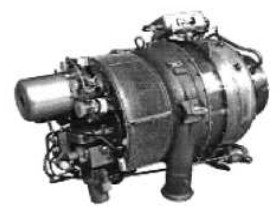
“Rubis 3”
-The “Rubis” 3 is installed on the Rafale D, and it operates between 0 and 7,500 meters of altitude. Between those altitudes it ensures the start-up of their Snecma M88 engines, as well as GE's F-404 and similar engines of other aircraft.
-The "TGA" is a compressed air turbo generator for its turbo engine that drives a compressor.
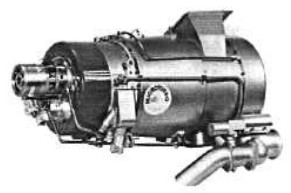
“TGA-15”
-This gives pressure and temperature air for different uses such as the cabin air conditioning system, starter turbine, hydraulic and electrical accessories. It is installed on the Rafale A and the SAAB Grippen.

“Dragón”
-The “Dragon” is another Microturbo APP for airplanes and helicopters. It supplies various types of electrical energy, and compressed air.
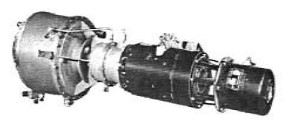
“Gevaudan 1”

“Gevaudan 2”
-The Gevaudans have a long tradition as they began their career on important aircraft such as those of the Gevaudan-3 version on the Caravelle 6R, the-1 on the Vautour, the -5 on the Neptune P2V7, the -8 on the Nord 262, -4 on the Macchi 326.
-The Gevaudan 1 has a generator and alternator in cascade.
-The Gevaudan 150 is an electric generator only.

“Gevaudan 180”
-The Gevaudan 180 is also a complete on-board auxiliary group (APP = Auxiliary Power Plant).

“Gevaudan 9”
-The “Gevaudan” family continues with the range of -9 (069-1, etc and 084, 101, 102) for land vehicle applications such as tanks (AMX-10), motorized guns or as autonomous power plants for ground or on-board weapons .
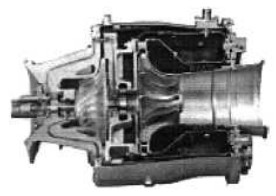
“Gevaudan 9”
-The same as the “Oliphant”, a turbine for traction of AMX-30 type armored vehicles (Pluto and Roland).
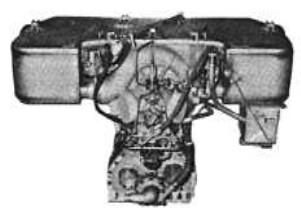
“Oliphant”
-We are already going to the most interesting of Microturbo, the small turbojets used on devices and various missiles or in small aviation.
-They were also used to propel motorgliders such as the Prometeus, EFS, Ensae, Microstar, Diamant, Fauvel.
-And also on small jets built specifically like the Caproni C-22 Vizzola, and the Microjet 90 and 220, or the BD5J.

“TRS-18”
-The TRS-18-1 (and TJA-24-1), were developed to meet the demand for increasing both speed and load of cruiser type missiles, such as the Italian Mirach 100 and 200, and the TJA-24 engine. -1 on the English Falconet.
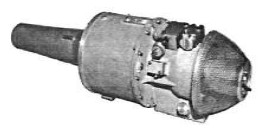
“TRS-18-1”
-The TRS-18-1 that was designed for motorized gliders and small sport planes was certified in 1976.
-The TRS-18-046 variant has a thrust of 202 lbf.

“TRS-18-046”
-The -056 reaches 220 lbf of thrust.

“TRS-18-056”
-And the -076 delivers 136 DaN.

“TRS-18-076”
-The TRB-13 and TRB-19 (from 1986) are pure jets with 182 and 279 lbf of thrust in the architectural line of the TRS-18.
-In those times there was a study of a small turbofan with 810 lbf of thrust known as TF-66. Unfortunately we have no more information about this engine.
-All the Microturbo motors that we have seen so far have a centrifugal compressor and a centripetal turbine.
-The next series, the "TRI" belongs to another family with already an axial compressor and an axial turbine.
-They were planned for small missiles and target planes. Below we can see a cutaway of the TRI-60 engine.
-From factory advertising information we get the following illustrations of the well-known TRI-60 engine, first an outside view and then a cutaway.
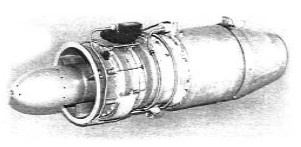

“TRI-60, outer view and cutaway”
-The TRI-60 stands out for its compressor with only three stages but transonic, its single annular chamber with 12 injectors and single-stage turbine.
-The start can be pneumatic on the ground or by autorotation at the time of the rocket launch of the carrier missile with electric or pyrotechnic ignition.
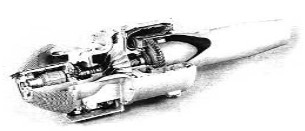
“TRS-18, cutaway”
-In their architecture the TFA-666 engines are associated with the TRS-18 and TRI-60 at the same time.
-The TRI-80 is a direct development of the TRI-60 but with 35% more thrust while maintaining the same outside diameter.
-Below we see the Microturbo TRS-18 that is kept at the Paris Air Museum, the MAE.
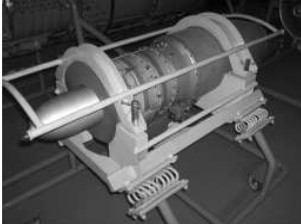
“Microturbo TRS-18 on its trolley at the MAE”

“TRI-60 cutaway”
-In the early 1980s, Microturbo began to supply the TRI-30s with a three-stage compressor, an annular chamber and a single turbine. They were single shaft engines.
-The TRI-40 was a grown version of the TRI-30 from 1982.

“TRI-40”

“TRI-60”
-The TRI-60s are the most prolific, in their models -1, -2, -3, -5, -30. and their series -067, -071, -074, -077, -080, -089, -097, -206, -218, -220, -221, -225, -227.
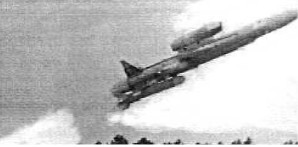
“C22L”
-The C22L has a TRI-60-3-206 on its back.

“TRI-60-074”
-All Microturbos are essentially simple, light, easy to start, insensitive to the incidence of air on the intake, easy to handle and transport, very reliable, economical and low maintenance, as can be seen from their observation.

“TRI-60-30”
-The TRI-70s are similar to the previous ones and with 950 lbf of thrust, the same as the TRI-80 with 1,200 lbf, a grown version of the former one.
-The TRI-60s have the J-403 official military nomenclature.
-The Microturbo company also manufactures conditioners, intercoolers, heat exchangers, even parts of thermally powered torpedoes.
-In the USA, around 1976, the AMES company built the TRS-18, under license.
-In the early 1990s, Microturbo reduced its activity and together with Turbomeca it joined the Labinal group, based in Toulouse.
-Today they are part of the SAFRAN group (see).
From Appendix 6: The TRI-10, known as IMP or Integrated Propulsion Module, is missing from the main text. The body of the vehicle and the engine are integrated in an unusual way. It delivers 110 Kgf of thrust.

“TRI-10, the integrated Microturbo”
-Even in the case of a specialized cruise missile engine, no application is known. However, the TRS-18 and TRI-60 have proliferated as they are more versatile.


“TRI-60-20, cutaway and angled front view”
From Appendix 9: Starting motors such as the “Eclair”, see main text, which were normally used as starters for the main engines of aircraft, are being used to power motorized gliders or small aircraft of all kinds.
-This is the case of the "Eclair" based on the Emeraude Concorde-starter, and the Noelle on the Mirage, (Atar engine).
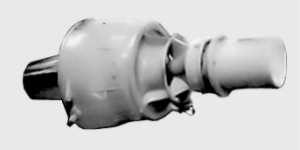
“Microturbo Eclair with propulsion nozzle”
-Already in the Safran group, at the 2013 Paris Air Show, it presented a new range of very light APU's with a great favorable weight-power ratio, minimum consumption and noise and pollution levels.

"Products based on two models"
-The e-APU and e-APU60 models are the beginning of this range that was planned to supply auxiliary power on board.
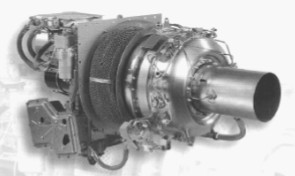
“The e-APU 60”
-They are installed in the tail of business or taxi airplanes, and in the engine compartment of helicopters as shown below.
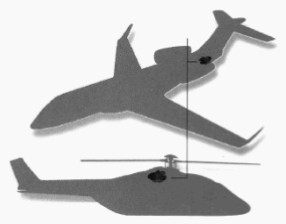
“APU installation”
Engines of MICROTURBO
Model: Athos III
Arquitecture:
Compressor/s:
Combustion chambers:
Turbines:
Power / Thrust: / ---
Weight:

"Athos III"
Model: Cougar
Arquitecture:
Compressor/s:
Combustion chambers:
Turbines:
Power / Thrust: / ---
Weight:

"Couguar 022"
Model: Dragon
Arquitecture:
Compressor/s:
Combustion chambers:
Turbines:
Power / Thrust: / ---
Weight:

"Dragon"
Model: e-APU
Arquitecture:
Compressor/s:
Combustion chambers:
Turbines:
Power / Thrust: / ---
Weight:

"Microturbo e-APU 60"
Model: Eclair
Arquitecture:
Compressor/s:
Combustion chambers:
Turbines:
Power / Thrust: / ---
Weight:

"Eclair"
Model: Gevaudan
Arquitecture:
Compressor/s:
Combustion chambers:
Turbines:
Power / Thrust: / ---
Weight:

"Gevaudan 1"
Model: J-403 (TRI-60)
Arquitecture:
Compressor/s:
Combustion chambers:
Turbines:
Power / Thrust: / ---
Weight:
Model: Jaguar
Arquitecture:
Compressor/s:
Combustion chambers:
Turbines:
Power / Thrust: / ---
Weight:

"Jaguar"
Model: Lynx
Arquitecture:
Compressor/s:
Combustion chambers:
Turbines:
Power / Thrust: / ---
Weight:
Model: Noelle-150
Arquitecture:
Compressor/s:
Combustion chambers:
Turbines:
Power / Thrust: / ---
Weight:

"Noelle 150"
Model: Noelle-180
Arquitecture:
Compressor/s:
Combustion chambers:
Turbines:
Power / Thrust: / ---
Weight:

"Noelle 180"
Model: Noelle-60
Arquitecture:
Compressor/s:
Combustion chambers:
Turbines:
Power / Thrust: / ---
Weight:

"Noelle 60290-002-015"
Model: Noelle-80
Arquitecture:
Compressor/s:
Combustion chambers:
Turbines:
Power / Thrust: / ---
Weight:

"Noelle 80 CV"
Model: Oliphant
Arquitecture:
Compressor/s:
Combustion chambers:
Turbines:
Power / Thrust:
Weight:

"Microturbo Oliphant"
Model: Rubis
Arquitecture:
Compressor/s:
Combustion chambers:
Turbines:
Power / Thrust: / ---
Weight:

"Rubis 3"
Model: Saphir
Arquitecture:
Compressor/s:
Combustion chambers:
Turbines:
Power / Thrust:
Weight:

"Saphir 3"
Model: SG-18
Arquitecture:
Compressor/s:
Combustion chambers:
Turbines:
Power / Thrust: / ---
Weight:
Model: TGA
Arquitecture:
Compressor/s:
Combustion chambers:
Turbines:
Power / Thrust: / ---
Weight:

"TGA-15"
Model: TJA-24-1
Arquitecture:
Compressor/s:
Combustion chambers:
Turbines:
Power / Thrust: / ---
Weight:
Model: TRB-13
Arquitecture:
Compressor/s:
Combustion chambers:
Turbines:
Power / Thrust: / ---
Weight:
Model: TRB-19
Arquitecture:
Compressor/s:
Combustion chambers:
Turbines:
Power / Thrust: / ---
Weight:
Model: TRI-10
Arquitecture:
Compressor/s:
Combustion chambers:
Turbines:
Power / Thrust: / ---
Weight:

"Microturbo TRI-10, the integrated Microturbo"
Model: TRI-40
Arquitecture:
Compressor/s:
Combustion chambers:
Turbines:
Power / Thrust: / ---
Weight:

"Microturbo TRI-40"
Model: TRI-60
Arquitecture:
Compressor/s:
Combustion chambers:
Turbines:
Power / Thrust: / ---
Weight:

"Microturbo TRI-60"
Model: TRI-70
Arquitecture:
Compressor/s:
Combustion chambers:
Turbines:
Power / Thrust: / ---
Weight:
Model: TRI-80
Arquitecture:
Compressor/s:
Combustion chambers:
Turbines:
Power / Thrust: / ---
Weight:
Model: TRS-18
Arquitecture:
Compressor/s:
Combustion chambers:
Turbines:
Power / Thrust: / ---
Weight:

"Microturbo TRS-18"
Model: TRS-80
Arquitecture:
Compressor/s:
Combustion chambers:
Turbines:
Power / Thrust: / ---
Weight:


